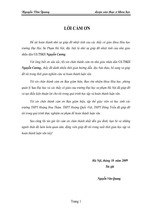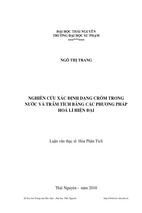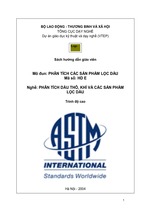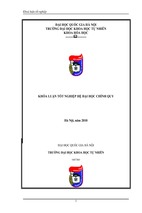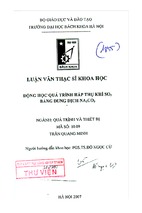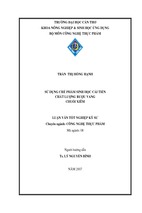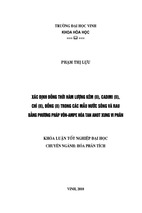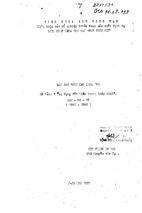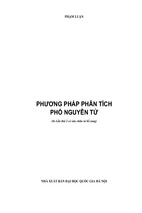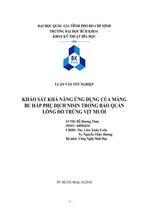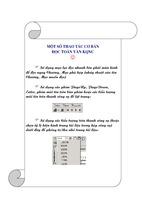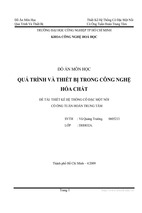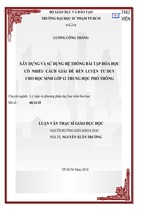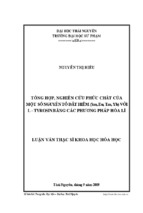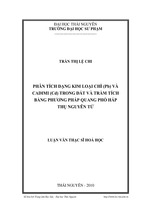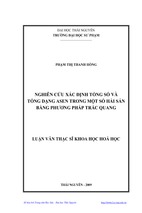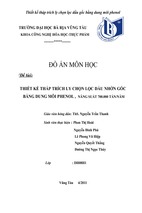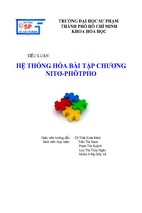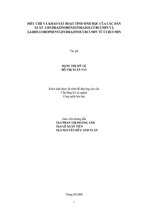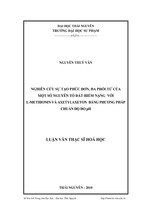Cary
100/300/4000/5000/6000i
Spectrophotometers
User’s Guide
Warranty
Notices
© Agilent Technologies, Inc. 2002,
2010-2012
No part of this manual may be
reproduced in any form or by any
means (including electronic storage
and retrieval or translation into a
foreign language) without prior
agreement and written consent from
Agilent Technologies, Inc. as governed
by United States and international
copyright laws.
Manual Part Number
8510197200
Edition
Seventh edition, October 2012
Agilent Technologies, Inc.
The material contained in this
document is provided “as is,” and is
subject to being changed, without
notice, in future editions. Further, to
the maximum extent permitted by
applicable law, Agilent disclaims all
warranties, either express or implied,
with regard to this manual and any
information contained herein,
including but not limited to the
implied warranties of merchantability
and fitness for a particular purpose.
Agilent shall not be liable for errors
or for incidental or consequential
damages in connection with the
furnishing, use, or performance of
this document or of any information
contained herein. Should Agilent and
the user have a separate written
agreement with warranty terms
covering the material in this
document that conflict with these
terms, the warranty terms in the
separate agreement shall control.
Technology Licenses
The hardware and/or software
described in this document are
furnished under a license and may be
used or copied only in accordance
with the terms of such license.
Restricted Rights Legend
If software is for use in the
performance of a U.S. Government
prime contract or subcontract,
Software is delivered and licensed as
“Commercial computer software” as
defined in DFAR 252.227-7014 (June
1995), or as a “commercial item” as
defined in FAR 2.101(a) or as
“Restricted computer software” as
defined in FAR 52.227-19 (June 1987)
or any equivalent agency regulation or
2
contract clause. Use, duplication or
disclosure of Software is subject to
Agilent Technologies’ standard
commercial license terms, and nonDOD Departments and Agencies of the
U.S. Government will receive no
greater than Restricted Rights as
defined in FAR 52.227-19(c)(1-2) (June
1987). U.S. Government users will
receive no greater than Limited Rights
as defined in FAR 52.227-14 (June
1987) or DFAR 252.227-7015 (b)(2)
(November 1995), as applicable in any
technical data.
Safety Notices
CAUTION
A CAUTION notice denotes a hazard.
It calls attention to an operating
procedure, practice, or the like that, if
not correctly performed or adhered to,
could result in damage to the product
or loss of important data. Do not
proceed beyond a CAUTION notice
until the indicated conditions are fully
understood and met.
WARNING
A WARNING notice denotes a
hazard. It calls attention to an
operating procedure, practice, or the
like that, if not correctly performed or
adhered to, could result in personal
injury or death. Do not proceed
beyond a WARNING notice until the
indicated conditions are fully
understood and met.
Cary 100/300/4000/5000/6000i Spectrophotometers User’s Guide
Safety Practices and Hazards
Contents
1. Safety Practices and Hazards
7
Ultraviolet radiation
8
Electrical hazards
8
Other precautions
9
Warning and caution messages
10
Information symbols
11
Color coding
12
CE compliance
13
Electromagnetic compatibility
13
EN55011/CISPR11
ICES/NMB-001
2. Introduction
13
14
15
Installation requirements
15
Documentation
15
Conventions
Specifications
Environmental
Weights and dimensions
Power
Connections
Gas supplies
Cary 100/300/4000/5000/6000i Spectrophotometers User’s Guide
16
16
16
17
17
17
18
3
Safety Practices and Hazards
3. Installation
19
Preparation
20
Software installation on a new computer
21
Upgrade existing Cary WinUV software
22
Starting the software
25
Software Status Bulletin
26
GPIB communications
26
USB-GPIB-HS converter
PCI-GPIB
Setting up the instrument
30
Cabling
Power
30
30
Turning on the system
31
Instrument performance tests
32
Sample holders
32
Cell holders
Solid sample holder (Cary 4000/5000/6000i only)
32
36
Installing the base plate
41
Installing other accessories
41
Nitrogen purging
42
Cary 100/300
Cary 4000/5000/6000i
Removing the sample compartment base
Cary 100/300
Cary 4000/5000/6000i
4
26
27
42
42
45
45
45
Cary 100/300/4000/5000/6000i Spectrophotometers User’s Guide
Safety Practices and Hazards
4. Maintenance
47
Cleaning
48
Source lamps
48
Fuses
49
220–240 AC
100-120 VAC
Spare Parts
Cary 100/300/4000/5000/6000i Spectrophotometers User’s Guide
49
49
50
5
Safety Practices and Hazards
This page is intentionally left blank.
6
Cary 100/300/4000/5000/6000i Spectrophotometers User’s Guide
Safety Practices and Hazards
1. Safety Practices and Hazards
Ultraviolet radiation
Electrical hazards
Other precautions
Warning and caution messages
Information symbols
Color coding
CE compliance
Electromagnetic compatibility
8
8
9
10
11
12
13
13
Your Agilent Cary instrument and accessories have been carefully
designed so that when used properly you have an accurate, fast,
flexible and safe analytical system.
If the equipment is used in a manner not specified by the
manufacturer, the protection provided by the equipment may be
impaired.
Information on safety practices appears throughout the
documentation (both printed and online) provided with your
instrument and accessories. Before using the instrument or
accessories, you must thoroughly read these safety practices.
Observe all relevant safety practices at all times.
Cary 100/300/4000/5000/6000i Spectrophotometers User’s Guide
7
Safety Practices and Hazards
Ultraviolet radiation
The deuterium (standard in all instruments) and mercury lamps (if
fitted) in the instrument emit hazardous ultraviolet (UV) radiation.
This radiation can cause serious damage to eyes. NEVER look
directly at either lamp and NEVER operate either lamp unless it is
correctly mounted in the lamp turret (Cary 4000/5000/6000i only)
and the turret is correctly mounted in the instrument.
NOTE
The mercury lamp is fitted as standard in the Cary 4000/5000/6000i.
Ozone can be generated by radiation from the source lamps.
Exposure to ozone can result in severe irritation to the skin, eyes,
and upper respiratory system. The maximum permissible exposure
level is 0.1 parts per million (0.2 milligrams per cubic meter).
ALWAYS ventilate the area surrounding the spectrophotometer such
that the concentration of ozone does not exceed the maximum
permissible level. All venting must be to outside air, never within the
building.
Electrical hazards
The Cary 100/300/4000/5000/6000i instruments and some
accessories contain electrical circuits, devices, and components
operating at dangerous voltages. Contact with these circuits, devices
and components can cause death, serious injury, or painful electrical
shock.
Panels or covers which are retained by screws on the
spectrophotometer and accessories (with the exception of the lamp
access cover) may be opened ONLY by Agilent-trained, Agilentqualified, or Agilent-approved service engineers. Consult the manuals
or product labels supplied with your computer, monitor and printer
to determine which parts are operator-accessible.
Operators and other unauthorized personnel are permitted access
ONLY to the lamp compartment and the sample compartment of the
Cary. ALWAYS switch off the spectrophotometer before changing a
lamp in the lamp compartment.
8
Cary 100/300/4000/5000/6000i Spectrophotometers User’s Guide
Safety Practices and Hazards
Good grounding/earthing is essential to avoid a potentially serious
electric shock hazard. Ensure that there is an integral ground
connection between the metal base of the spectrophotometer and
accessories and the 3 pin earth-grounded receptacle. Consult the
manuals or product labels supplied with your computer, monitor and
printer for the relevant grounding requirements.
NOTE
The safety classification is given as Equipment Class I.
Application of the wrong supply voltage can create a fire hazard and
a potentially serious shock hazard, and could seriously damage the
Cary system, accessories and any attached ancillary equipment. The
Cary 4000/5000/6000i has a Universal Power Supply that adapts to
the supply voltage. However, care must be taken to ensure that the
correct voltage is used.
Do not connect the spectrophotometer or accessories to the mains
power supply until you have made sure that the slide switch(es)
(Cary 100/300 only) at the rear of these are correctly set for the
mains power supply in the specific outlet in your laboratory to which
the equipment will be connected. Consult the manuals supplied with
your computer, monitor and printer for their specific voltage
requirements.
Replace blown fuses with fuses of the size and rating as stipulated in
the text adjacent to the fuse holder or in the manuals where listed.
Do NOT use power cords with faulty or frayed insulation.
Other precautions
Both the deuterium and the visible lamps operate at high
temperatures, and touching either of these lamps may result in
burns. Before replacing a lamp that has been lit, switch off the
spectrophotometer and either ensure that the lamp has cooled, or
protect your fingers from burns.
Do not block the ventilation grilles on the spectrophotometer and
accessories. Consult the manuals supplied with your computer,
monitor and printer for their specific ventilation requirements.
Cary 100/300/4000/5000/6000i Spectrophotometers User’s Guide
9
Safety Practices and Hazards
Use of the Cary system and accessories may involve materials,
solvents and solutions which are flammable, corrosive, toxic or
otherwise hazardous.
Careless, improper, or unskilled use of such materials, solvents and
solutions can create explosion hazards, fire hazards, toxicity and
other hazards which can result in death, serious personal injury, and
damage to equipment and property.
ALWAYS ensure that laboratory safety practices governing the use,
handling and disposal of such materials are strictly observed. These
safety practices should include the wearing of appropriate safety
clothing and safety glasses.
Warning and caution messages
Carefully read all warnings and cautions and observe them at all
times.
A Warning message is used in the text when failure to observe
instructions or precautions could result in death or injury. Warnings
have the following format:
WARNING
Hazard Type
Nature of the hazard, information on how to avoid the hazard, and possible
consequences if you don’t.
The triangular symbols that appear in conjunction with warnings are
outlined in the next section.
A Caution message is used when failure to observe instructions could
result in damage to equipment (Agilent-supplied and/or other
associated equipment). Cautions have the following format:
CAUTION
10
Caution information appears here.
Cary 100/300/4000/5000/6000i Spectrophotometers User’s Guide
Safety Practices and Hazards
Information symbols
The following triangular symbols appear in conjunction with
warnings on the spectrometer and associated documentation. The
hazard they depict is shown below each symbol:
Broken glass
Corrosive liquid
Ejecting parts
Electrical shock
Eye hazard
Fire hazard
Heavy weight
(danger to feet)
Heavy weight
(danger to hands)
Hot surface
Moving parts
Noxious gas
The following symbol may be used on warning labels attached to the
instrument. When you see this symbol, refer to the relevant operation
or service manual for the correct procedure referred to by that
warning label.
Cary 100/300/4000/5000/6000i Spectrophotometers User’s Guide
11
Safety Practices and Hazards
The following symbols also appear on the instrument or in the
documentation:
I
Mains power on
0
Mains power off
Fuse
Single phase alternating current
Focus
Vertical adjustment
Horizontal adjustment
When attached to the rear of the instrument, indicates that the
product complies with the requirements of one or more EU directives
When attached to the rear of the product, indicates that the product
has been certified (evaluated) to CSA 61010.1 and UL 61010-1
Color coding
The various indicator lights appearing on Agilent instruments and
associated accessories are color-coded to represent the status of the
instrument or accessory.
12
A green light indicates the instrument is in normal/standby
condition.
An orange light indicates that a potential hazard is present.
A blue light indicates that operator intervention is required.
A red light warns of danger or an emergency.
Cary 100/300/4000/5000/6000i Spectrophotometers User’s Guide
Safety Practices and Hazards
CE compliance
Agilent Cary instruments have been designed to comply with the
requirements of the Electromagnetic Compatibility (EMC) Directive
and the Low Voltage (electrical safety) Directive (commonly referred
to as the LVD) of the European Union. Agilent has confirmed that
each product complies with the relevant directives by testing a
prototype against the prescribed EN (European Norm), IEC or CISPR
standards.
Proof that a product complies with the directives is indicated by:
The CE marking appearing on the rear of the product.
The documentation package that accompanies the product,
containing a copy of the Declaration of Conformity. This
declaration is the legal declaration by Agilent that the product
complies with the directives and also shows the EN standards to
which the product was tested to demonstrate compliance.
Electromagnetic compatibility
EN55011/CISPR11
Group 1 ISM equipment: group 1 contains all ISM equipment in
which there is intentionally generated and/or used conductively
coupled radio- frequency energy which is necessary for the internal
functioning of the equipment itself.
Class A equipment is equipment suitable for use in all
establishments other than domestic and those directly connected to a
low voltage power supply network which supplies buildings used for
domestic purposes.
This device complies with the requirements of CISPR11, Group 1,
Class A as radiation professional equipment. Therefore, there may be
potential difficulties in ensuring electromagnetic compatibility in
other environments, due to conducted as well as radiated
disturbances.
Cary 100/300/4000/5000/6000i Spectrophotometers User’s Guide
13
Safety Practices and Hazards
Operation is subject to the following two conditions:
1
This device may not cause harmful interference.
2
This device must accept any interference received, including
interference that may cause undesired operation.
If this equipment does cause harmful interference to radio or
television reception, which can be determined by turning the
equipment off and on, the user is encouraged to try one or more of
the following measures:
1
Relocate the radio or antenna.
2
Move the device away from the radio or television.
3
Plug the device into a different electrical outlet, so that the device
and the radio or television are on separate electrical circuits.
4
Make sure that all peripheral devices are also certified.
5
Make sure that appropriate cables are used to connect the device
to peripheral equipment.
6
Consult your equipment dealer, Agilent Technologies, or an
experienced technician for assistance.
7
Changes or modifications not expressly approved by Agilent
Technologies could void the user’s authority to operate the
equipment.
ICES/NMB-001
This ISM device complies with Canadian ICES- 001.
Cet appareil ISM est conforme à la norme NMB-001 du Canada.
14
Cary 100/300/4000/5000/6000i Spectrophotometers User’s Guide
Introduction
2. Introduction
Installation requirements
Documentation
Specifications
15
15
16
Installation requirements
Before receiving your Agilent Cary instrument, you will have been
provided with a Cary Site Preparation Guide, which describes the
environmental and operating requirements of the Cary system. You
must prepare your laboratory according to these instructions before
the Cary can be installed. You should keep the site preparation guide
for future reference. If you misplace your copy, you can obtain a
replacement from your local Agilent office.
Documentation
You have been provided with the following documentation to help
you set up and operate your Cary 100/300/4000/5000/6000i system:
This user’s guide, with safety practices and hazards information,
instructions for installing and maintaining the components of the
Cary hardware and software, and troubleshooting information
Extensive Help (provided with the Cary WinUV software)
containing context-sensitive Help, step-by-step instructions for
frequently performed analyses, and operating instructions
Cary 100/300/4000/5000/6000i Spectrophotometers User’s Guide
15
Introduction
Conventions
The following conventions have been used in procedures throughout
the documentation:
Menus, menu items, buttons and check boxes have been typed in
bold. For example, ‘click OK’ and ‘From the Edit menu, choose
Copy’.
ALL CAPITALS indicate keyboard commands. For example,
‘press ENTER’ and ‘press SHIFT+F8’.
A Note is used to give advice or information.
A Tip is used to give practical hints to help you achieve the best
possible performance from your instrument.
Specifications
The instrument is suitable for indoor use only and is classified
Pollution degree 2 and Installation Category II (EN 61010-1).
Environmental
Table 1. Suitable conditions during instrument transportation, non-operation and operation
Condition
Altitude (m, ft)
Temperature
(°C, °F)
Relative humidity,
non-condensing (%)
Non-operating (transport)
0–2133, 0–7000
5–45, 41–113
20–80
Operating within performance
specifications
0–853, 0–2800
853–2133, 2800–7000
10–35, 50–95
10–25, 50–77
8–80
For optimum analytical performance, it is recommended that the
ambient temperature of the laboratory be between 20 and 25 °C (68
and 77 °F) and be held constant to within ±2 °C (±3.6 °F) throughout
the entire working day.
16
Cary 100/300/4000/5000/6000i Spectrophotometers User’s Guide
Introduction
Weights and dimensions
Instrument
Weights
Cary 100/300
Cary 4000/5000/6000i
Dimensions (width x depth x height)
Packed: 75 kg (165 lb)
Packed: 860 x 770 x 655 mm (34 x 30 x 26 in)
Unpacked: 45 kg (99 lb)
Unpacked: 640 x 650 x 320 mm (25 x 26 x 13 in)
Packed: 141 kg (310 lb)
Packed: 1425 x 800 x 670 mm (56 x 31 x 26 in)
Unpacked: 91 kg (200 lb)
Unpacked: 1000 x 650 x 340 mm (40 x 26 x 14 in)
Power
Instrument
Cary 100/300
Voltage
Consumption
Frequency
100, 120, 220 or 240 VAC ±10%
270 VA (approximately)
47–63 Hz
300 VA (approximately)
47–63 Hz
230 +14% -6% VAC
230 +6% -14% VAC
Cary 4000/5000/6000i
100-240VAC +/- 10%
Mains inlet coupler
3/2 A 120/250 VAC 50–60 Hz IEC type
Connections
Mains power cord
Australia: 10 A 250 VAC. Complies with AS3112.
Europe: 6 A 250 VAC. Complies with CEE7 sheet vii or
NFC61.303 VA.
USA: 10 A 125 VAC. Complies with NEMA 5-15P.
Rear
IEEE 488 (GPIB Cary 100/300/4000/5000/6000i system connection)
Sample compartment
15-pin D-range connector with 2 high voltage pins: -1000 VDC,
+125 VDC (Cary 4000/5000), +85 VDC (Cary 6000i)
Cary 100/300/4000/5000/6000i Spectrophotometers User’s Guide
17
Introduction
When the Accessory Controller Board is fitted in the Cary 100/300
and for all Cary 4000/5000/6000i instruments:
Three connectors for accessories in the sample compartment
(low voltage DC, and digital lines)
One connector for accessories on the front of the instrument
(identical to one of the connectors described above).
NOTE
There is no separate Accessory Controller Board for the Cary 4000/5000/6000i.
This functionality is part of the standard instrument.
NOTE
For more information, refer to the Accessory Controller Board operation manual,
in the Help.
Gas supplies
The nitrogen purging system, which is not provided by Agilent,
requires an operating pressure of 83 to 172 kPa (12 to 25 psig).
Nitrogen supply tubing should be clean, flexible plastic (polyvinyl
chloride (PVC) or equivalent) tubing of 6 millimeter (1/4 inch)
internal diameter. Do not use rubber tubing, as this is usually treated
with talc, which will be carried into and contaminate the instrument
optics.
CAUTION
Do not use rubber tubing, as this is usually treated with talc, which will be
carried into and contaminate the instrument optics.
Flow rates are between 0 and 30 liters per minute (64 cubic feet per
hour).
18
Cary 100/300/4000/5000/6000i Spectrophotometers User’s Guide
Installation
3. Installation
Preparation
Software installation on a new computer
Upgrade existing Cary WinUV software
Starting the software
Software Status Bulletin
GPIB communications
Setting up the instrument
Turning on the system
Instrument performance tests
Sample holders
Installing the base plate
Installing other accessories
Nitrogen purging
Removing the sample compartment base
20
21
22
25
26
26
30
31
32
32
41
41
42
45
Your Cary will be installed by an Agilent-trained and certified
representative. The ‘Preparation’ and ‘Software installation on a new
computer’ sections on Pages 20 and 21 and the ‘GPIB
communications card’ section on Page 26 are provided for your
information in case you move the instrument or are using a new
computer.
Cary 100/300/4000/5000/6000i Spectrophotometers User’s Guide
19
Installation
Preparation
Before installing the Cary WinUV software, ensure that you have:
Preparation requirement
Reference
Installed Microsoft Windows 7 32-bit operating system
with Service Pack 1 or Windows XP Service Pack 3 and
checked that all devices, for example, sound card and CD
drive, are working.
Windows operating system documentation.
Installed Windows Internet Explorer version 6 or later.
Documentation supplied with Internet Explorer.
Set the monitor screen resolution to at least 800 x 600
pixels and the color quality to at least High Quality.
Windows operating system documentation.
Logged on as an Administrator.
Windows operating system documentation.
Read the Software Status Bulletin.
Software Status Bulletin document delivered
with the Cary WinUV software.
NOTE
The Cary WinUV software will read Cary OS/2 and DOS data files. However, if
you are upgrading to version 4.20 from Cary OS/2 or DOS, contact your local
Agilent office, as a service call will be required.
NOTE
If you are installing 21 CFR Part 11 software, refer to the Cary WinUV Pharma
Software Installation Instructions for 21 CFR Part 11 Environments.
21 CFR Part 11 software installation involves an administrator using the Agilent
Spectroscopy Configuration Manager (SCM) to set up access privileges, and so
on. In addition, SCM uses the Varian Spectroscopy Database Administration
(VSDA) program for storing files. Refer to the SCM and VSDA Help for
information about setting up 21 CFR Part 11 systems.
20
Cary 100/300/4000/5000/6000i Spectrophotometers User’s Guide
- Xem thêm -

